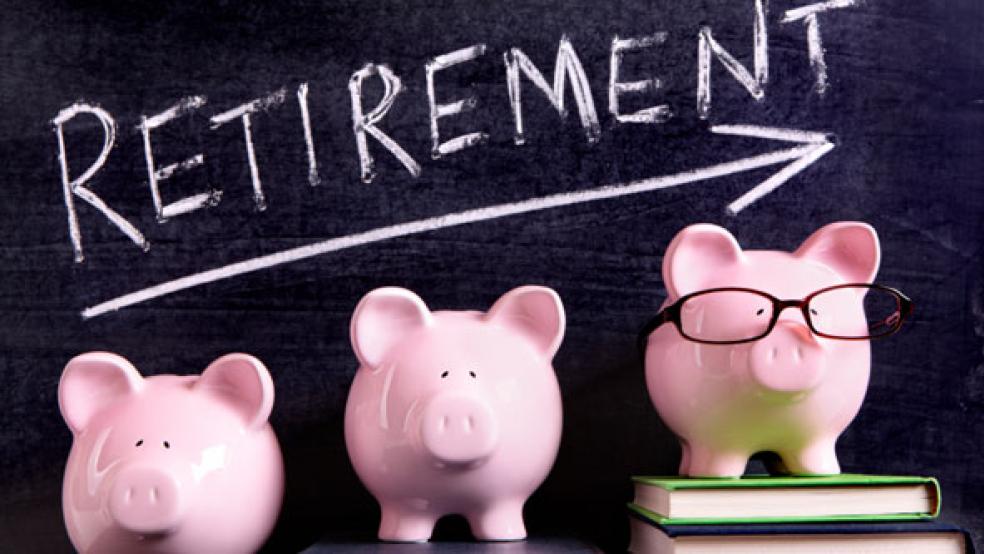Saving for retirement would be a lot less confusing—and probably more achievable—if there was one ideal number to strive for. But that’s not how it works, and even the simple formulas that people rely on change without warning, making it harder to secure a big enough nest egg.
What we are sure of is that we’re not saving enough, according to nearly every survey released on the subject.
More than half of Americans (55 percent) don’t have enough saved to cover basic living expenses in retirement, says one study. Forty-five percent have nothing saved at all, according to another survey. And a third found that while Baby Boomers wanted to have $45,500 in annual retirement income, they have only saved enough to provide $9,129 a year.
Those are dismal statistics and are probably even more worrisome once you hit that half-century mark and retirement is closer at hand. Is there any way to tell if you’re on the right track?
Related: The Best States for Retirement 2016
“As for how much money a person should have, it’s not as straightforward as it may seem, especially for a 50 year old,” says James Saulnier, a certified financial planner in Fort Collins, Colo. “One must evaluate their income needs in retirement and how much of that is going to be covered with Social Security benefits, pensions and annuity income.”
You’re in good shape if you have saved three to five times your current salary, he says. If you have five to eight times your salary saved, you’re in great shape. Fidelity’s retirement savings chart, from age 30 to 67, shows similar results. “Less than three times your salary, and you are quickly approaching problem territory,” Saulnier says.
Work backward
It helps to work backward to get a more concrete idea of your expenses and income in retirement. That will allow you determine what you should have at age 50. Break down your expected expenses into two types, essential and lifestyle, says Ronald Oldano, a private wealth advisor at Ameriprise Advisors in Wesley Chapel, Fla.
Essential retirement expenses include rent or mortgage payments, groceries, utilities, auto insurance, long-term-care premiums and homeowners insurance. Add those up and see if your expected payments from Social Security, pensions, interest from secure assets like corporate bonds and rental income will cover that amount.
Related: The Retirement Revolution That Failed: Why the 401(k) Isn’t Working
Don’t factor in retirement investment accounts such as 401(k)s or IRAs because their value changes with the market. “Your essential expenses require significant stability of income,” says Oldano.
Those accounts will cover lifestyle expenses such as recreation, travel, gifts and hobbies, which can be increased or decreased depending on the market. “An ‘up’ market can be the difference between a four-week Greek Isle cruise versus a riverboat cruise up the Hudson River,” he says.
A complex formula
Here’s another, more complicated way to see if you’re ready to retire in 16 to 17 years, says Leon LaBrecque, managing partner of LJPR Financial Advisors in Troy, Mich. Start with the amount you need to keep you happy in retirement, which LaBrecque is your after-tax paycheck minus what you put away for savings.
“In other words, we don't want your life to be lesser in retirement,” says LaBrecque. Then subtract your Social Security. What’s left is your retirement gap. Multiply it by 25 and 33. “These are the goalposts of your pile of retirement dough,” he says.
Say you’re happy living on $7,000 a month. Subtract your monthly Social Security expectation (let’s say $2,500 in this example), your spouse’s Social Security and any pension. That leaves a $4,500-a-month gap, or about $54,000 a year (after taxes).
Related: 7 Common Myths that Can Ruin Your Retirement
If you adjust for taxes and inflation, you need about $72,000 a year pre-tax. Multiply that by 25 to get your minimum amount for retirement and 33 for an even larger nest egg. Now, roughly triple your retirement savings (assuming 7 percent return) and see if you fall somewhere between that minimum and maximum range.
If you’re behind
Like most Americans, you’re probably behind. Despite the ideal targets, “most don't start getting serious about retirement planning till 50, so they are behind,” says Wes Shannon, a certified financial planner at SJK Financial Planning in Hurst, Tex.
But don’t despair. There are ways to supercharge your savings so that you can enjoy a comfortable retirement. That means a lot of catch-up. First, consider working until 70 to get the maximum Social Security benefit, says Shannon. The maximum benefit can be as much as 76 percent bigger than what you would collect if you filed early at 62.
Second, put the maximum amount into retirement accounts, which is higher for those 50 and over. The maximum IRA contribution is $6,500 this year. For 401(k) and similar accounts, the max is $24,000. At the same time, sock away as much money into other investment accounts that are balanced to reflect your growth expectations and risk tolerance.
“If you’re behind on savings, reduce spending,” says Niv Persaud, managing director of Transition Planning & Guidance in Atlanta. “Also, start going through your stuff and sell items you no longer need. Decluttering now makes it easier to down-size when you need to later in life.”
Make sure to apply for long-term-care insurance before you turn 55. After that age, you will have to take a short-term memory test to qualify for coverage, says Saulnier.
“If you wait until your 60s, you run the risk of becoming uninsurable. Last year, 63 percent of our clients over the age of 60 who applied for traditional long-term care coverage were denied coverage,” he says. “Buy it while you can.”





